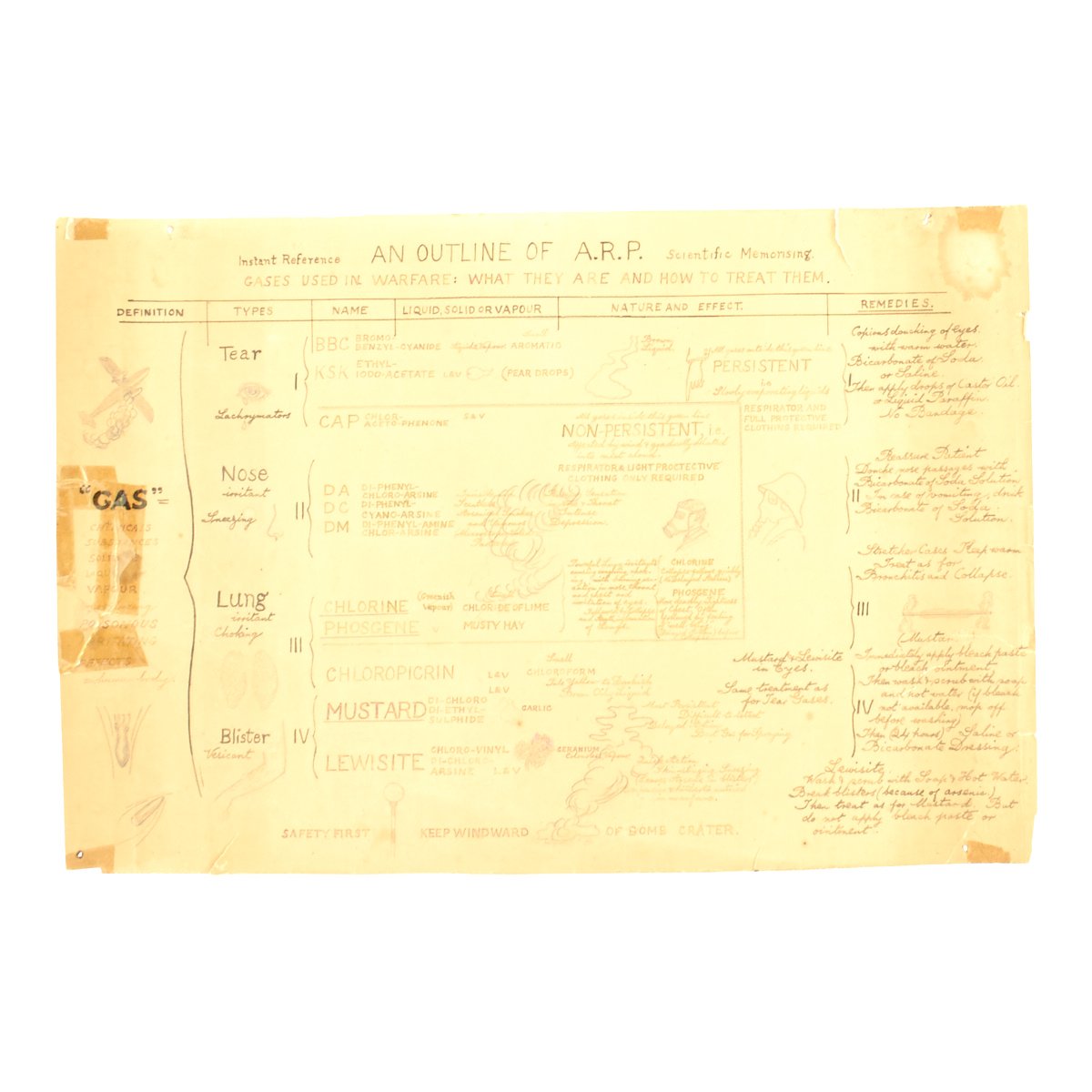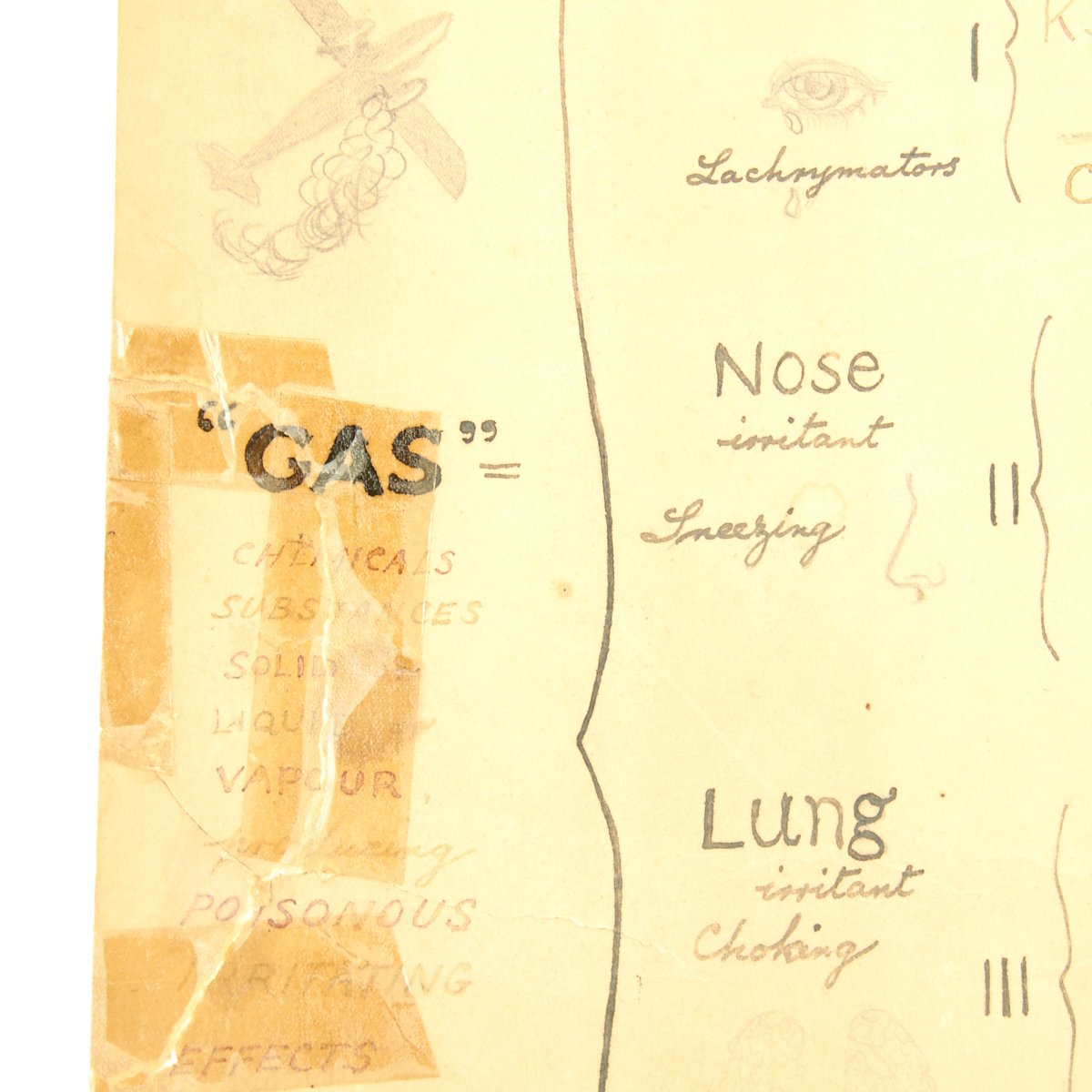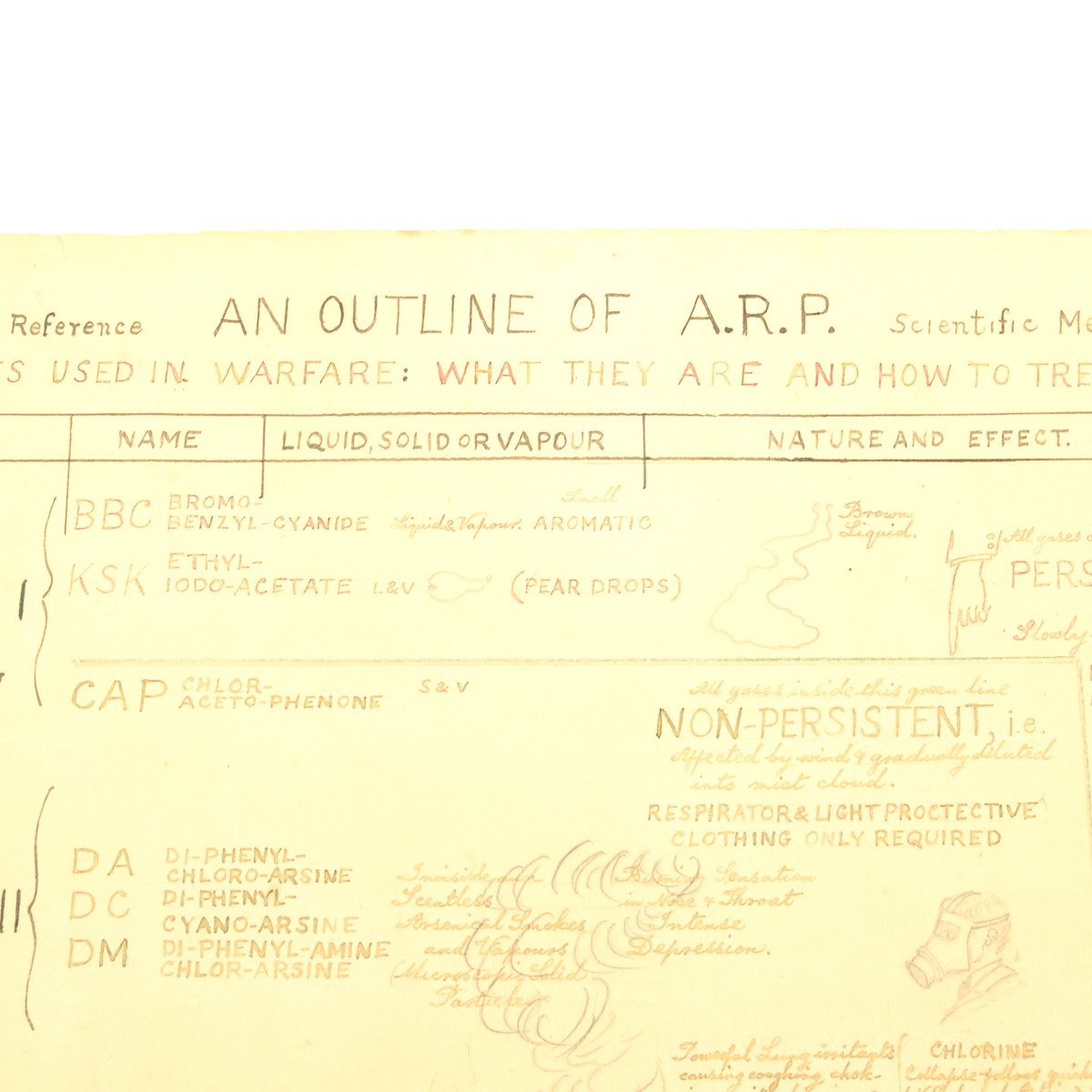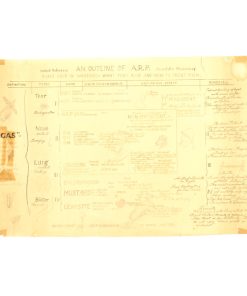Original British WWII Air Raid Precautions A.R.P. Hand Drawn Gas Warfare Response Wall Chart Original Items
$ 175,00 $ 70,00
Original Item: One of a Kind. How this survived for 80 odd years after the War we do not know. Most likely this was kept by a WW1 Veteran, who in WW2 being mature of age and unwanted for the front line so to speak, volunteered his services in the HOME DEFENSE, after all was was probably an OLD MAN of 45!
The A.R.P., which stands for AIR RAID PRECAUTIONS (not patrol), were a dedicated group of veterans who risked life and limb to assist with Medical issues, building security and were expected to handle Gas and unexploded bomb (UXB) issues as well. As a contribution to his Unit this unidentified guy, clearly an amateur Artist painstakingly constructed this WALL POSTER measuring 15″ tall by 21 1/2″ using black and red ink as well as pencil to deliver his presentation. The Subject was “GAS”, dreaded from the First World War was greatly feared in the second.
This chart complete with CARTOON like illustrations drives home his object lesson with some much needed amusement. Listing different types of Gas and the ways to treat and handle those difficult situations, he appears to have it all covered. This no doubt was HIS CONTRIBUTION TO THE MUCH NEEDED WAR EFFORT!
Yellowed with age there is some small old damage to the left margin which has been repaired using ancient scotch tape. Otherwise only a few nips and drawing pin holes making this not only a very rare A.R.P. item but a very attractive Wartime item. Ready to display.
More about the A.R.P.:
Air Raid Precautions (ARP) was an organization in the United Kingdom set up in 1937 dedicated to the protection of civilians from the danger of air raids. It included the Raid Wardens’ Service that was to report on bombing incidents. Every local council was responsible for organizing ARP wardens, messengers, ambulance drivers, rescue parties and liaison with police and fire brigades.
September 1st, 1939, ARP Wardens enforced the “blackout”. Heavy curtains and shutters were required on all private residences, commercial premises, and factories to prevent light escaping and so making them a possible target for enemy bombers to locate their targets. With increased enemy bombing during the Blitz, the ARP services were central in reporting and dealing with bombing incidents. They managed the air raid sirens and ensured people were directed to shelters.
From 1941 the ARP officially changed its title to Civil Defense Service to reflect the wider range of roles it then encompassed. During the war almost 7,000 Civil Defense workers were killed. In all some 1.4 million men and women served as ARP wardens during World War Two. The Civil Defense Service was stood down after the end of the war in Europe on 2 May 1945.
The ARP Services were to include several specialist branches. First Aid Parties were trained to give first response first aid to those injured in bombing incidents.
Fast Shipping with Professional Packaging
Thanks to our longstanding association with UPS FedEx DHL, and other major international carriers, we are able to provide a range of shipping options. Our warehouse staff is expertly trained and will wrap your products according to our exact and precise specifications. Prior to shipping, your goods will be thoroughly examined and securely secured. We ship to thousands clients each day across multiple countries. This shows how we're dedicated to be the largest retailer on the internet. Warehouses and distribution centres can be located throughout Europe as well as the USA.
Note: Orders with more than one item will be assigned a processing date depending on the item.
Before shipping before shipping, we'll conduct a thorough inspection of the items you have ordered. Today, the majority of orders will be delivered within 48 hours. The delivery time will be between 3-7 days.
Returns
The stock is dynamic and we cannot completely manage it because multiple stakeholders are involved, including our factory and warehouse. So the actual stock may alter at any time. It's possible that you may not receive your order once the order has been made.
Our policy is valid for a period of 30 days. If you don't receive the product within 30 days, we are not able to issue a refund or an exchange.
You can only return an item if it is unused and in the same state as the day you received it. You must have the item in its original packaging.
Related products
Uncategorized
Uncategorized
Uncategorized
Uncategorized
Uncategorized
Australian WWII Owen MK1 Machine Carbine SMG Custom Fabricated Replica with Sling Original Items
Uncategorized
Uncategorized
Uncategorized
Uncategorized
Uncategorized
Uncategorized
Uncategorized
Uncategorized
Uncategorized
Uncategorized
Uncategorized
Uncategorized
Angolan Rebel 1970s era 60mm Inert Display Mortar from Angolan Civil War Original Items













































































